Revolutionizing Libraries: The Architectural Brilliance Of Seattle Central Library By Rem Koolhaas
- 20 Dec 2023
- By Paras Gandhi

Rem Koolhaas is a renowned Dutch architect and architectural theorist, celebrated for his groundbreaking designs and innovative approach to urban planning. He co-founded the architectural firm OMA (Office for Metropolitan Architecture) and has left an indelible mark on the field with projects like the CCTV Headquarters in Beijing and the Seattle Central Library. Koolhaas's work is characterized by bold, unconventional concepts that challenge conventional architectural norms.
Here are three of Rem Koolhaas's best-known architectural works:
1. CCTV Headquarters, Beijing, China
This iconic building, often referred to as the "Big Pants" due to its unique and innovative design, is a prime example of Koolhaas's architectural prowess. Completed in 2012, it combines daring structural engineering with a distinctive aesthetic, making it a symbol of modern Beijing.
2. Seattle Central Library, Seattle, USA
Koolhaas's design for the Seattle Central Library, completed in 2004, is a masterpiece of contemporary library architecture. Its unconventional form and use of materials reflect his commitment to pushing the boundaries of conventional design while creating a functional and engaging public space.
3. Netherlands Embassy, Berlin, Germany
This embassy, completed in 2003, is a striking example of Koolhaas's ability to blend functionality with architectural innovation. Its transparent and interactive design fosters openness and diplomacy, making it a unique representation of a modern embassy.
These projects showcase Rem Koolhaas's distinctive style and his willingness to challenge traditional architectural norms.
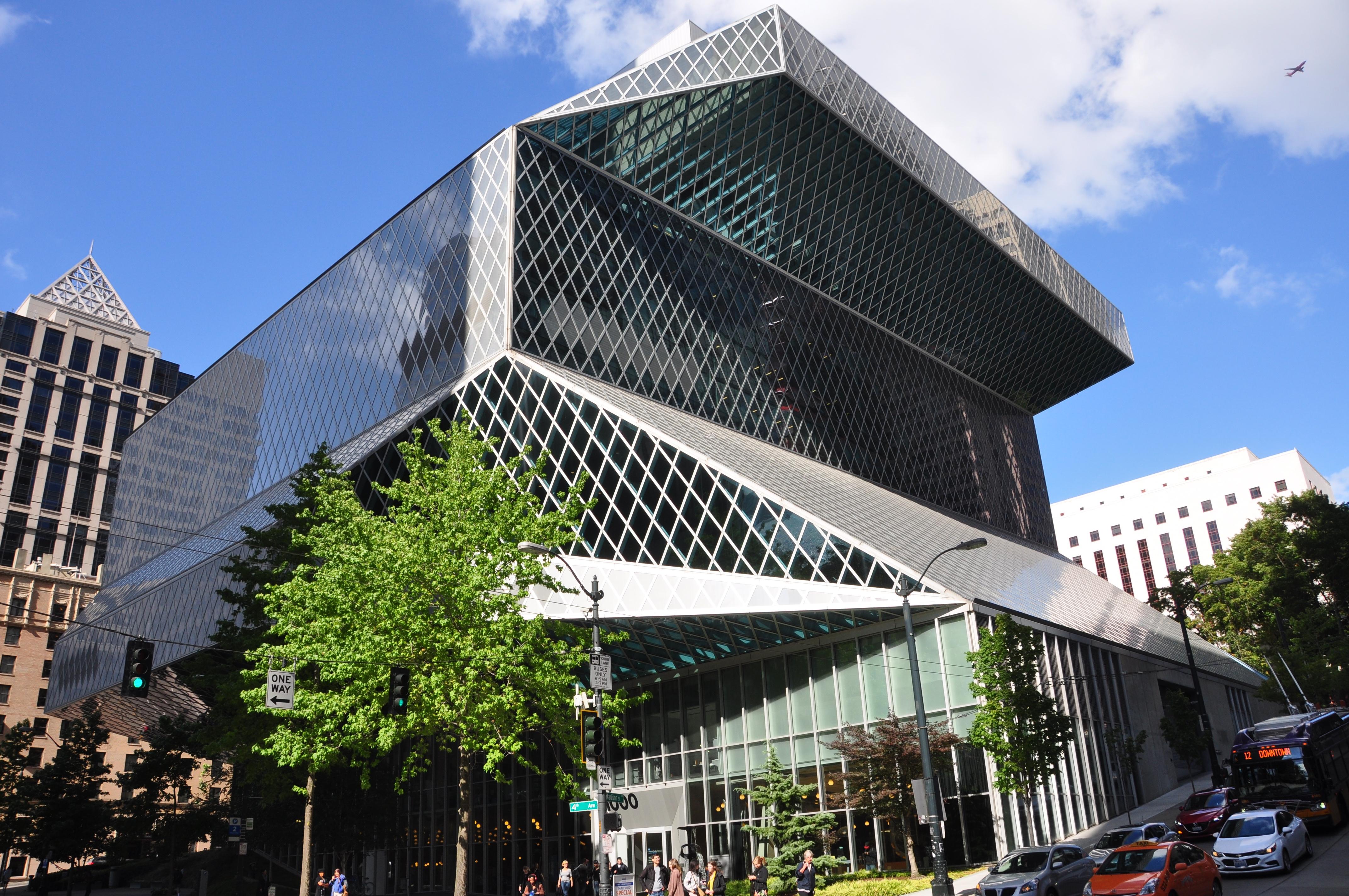
The Seattle Central Library
The Seattle Central Library, designed by the acclaimed Dutch architect Rem Koolhaas, is an iconic architectural marvel that stands as a testament to innovation in library design. Completed in 2004, this contemporary masterpiece redefines the conventional notion of what a library should be, emphasizing an unconventional form that seamlessly blends with functionality, ultimately creating an engaging public space.
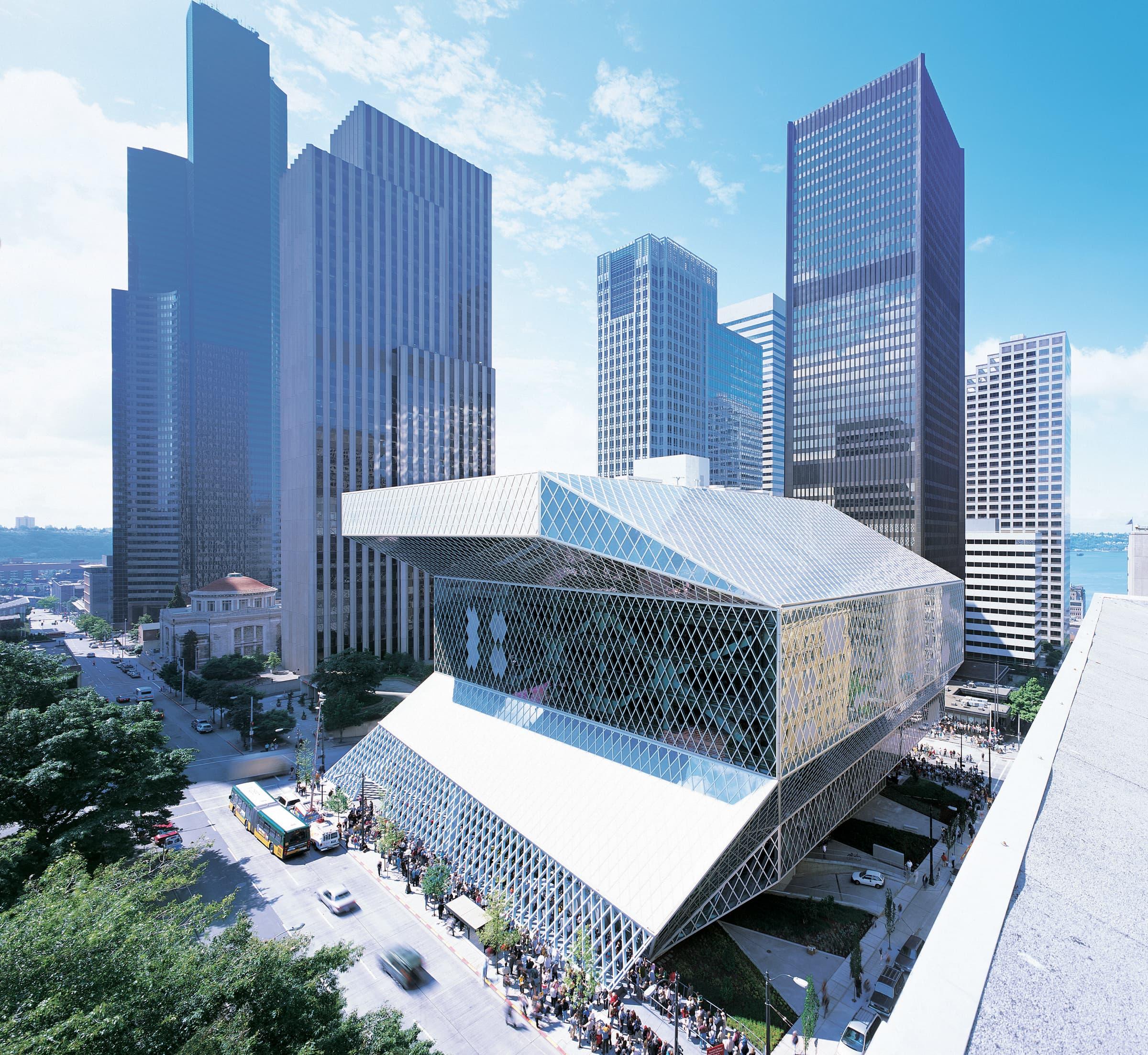
Design and Architecture
The Seattle Central Library's design is a prime example of Rem Koolhaas's architectural prowess. Koolhaas, known for pushing the boundaries of conventional architecture, embarked on a mission to create a library that was not only a repository of knowledge but also an architectural spectacle. The result is a stunning embodiment of contemporary library architecture that defies preconceived notions.
The library's unconventional form immediately captures attention. Its dynamic and irregular shape, marked by sharp angles and a dramatic, asymmetrical structure, sets it apart from traditional library buildings. The exterior is a striking composition of glass and steel, exuding a sense of transparency and openness, reflecting the idea of knowledge being accessible to all.
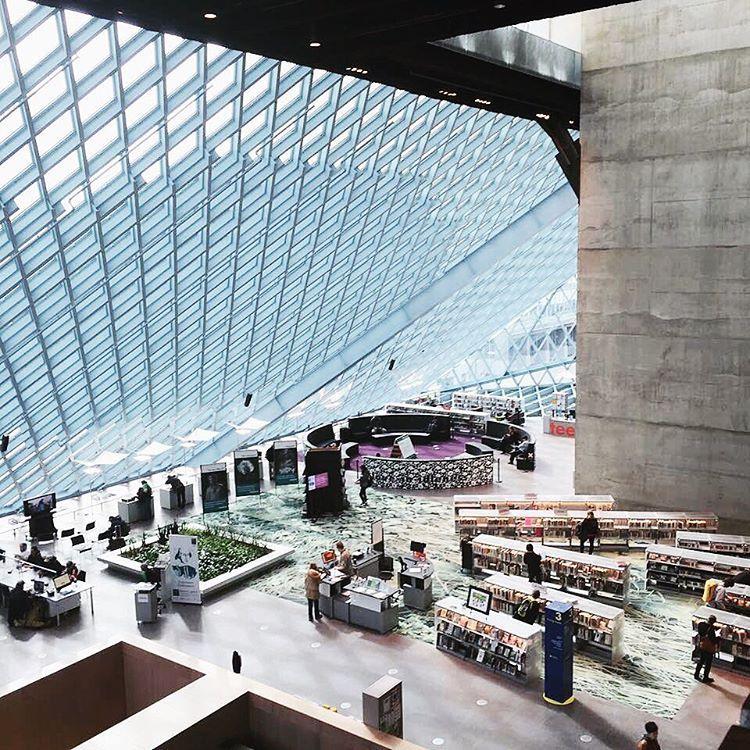
Functionality
While the Seattle Central Library's design is undeniably unconventional, it remains highly functional. The interior spaces are meticulously designed to maximize utility while ensuring a welcoming atmosphere for library users. The building spans 11 stories, providing ample room for a vast collection of books, multimedia resources, and other library facilities.
The library's unique "Book Spiral" design is a standout feature. It winds in a continuous, ascending path, facilitating easy access to the extensive book collection without the need for conventional, cumbersome stacks. This innovative design not only enhances the user experience but also optimizes space utilization within the library.
Additionally, the library features an abundance of natural light, thanks to its expansive windows and skylights. This natural illumination creates a warm and inviting environment for patrons, making it an ideal place for reading, research, and contemplation.
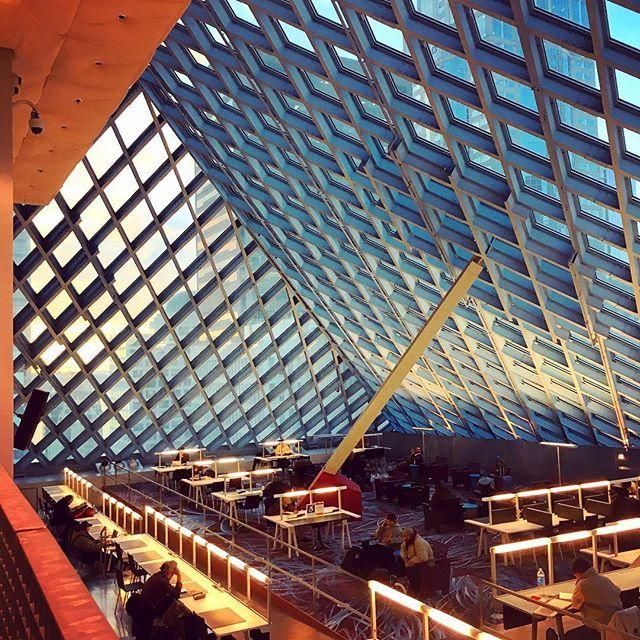
Engaging Public Space
One of the central ideas behind Koolhaas's design for the Seattle Central Library was to transform it into an engaging public space. The library serves as a dynamic hub for the community, offering more than just books. It provides a diverse range of resources and services, making it a place where people come to explore, learn, and connect.
The building's unconventional layout encourages exploration. Visitors can ascend the various levels, discovering different sections and activities as they move through the library. There are designated areas for children, teenagers, and adults, ensuring that every age group finds a space tailored to their needs.
Moreover, the library fosters a sense of community by hosting events, workshops, lectures, and exhibitions. It encourages interaction among library users, making it not just a place for individual study but also a meeting point for cultural and intellectual exchange.
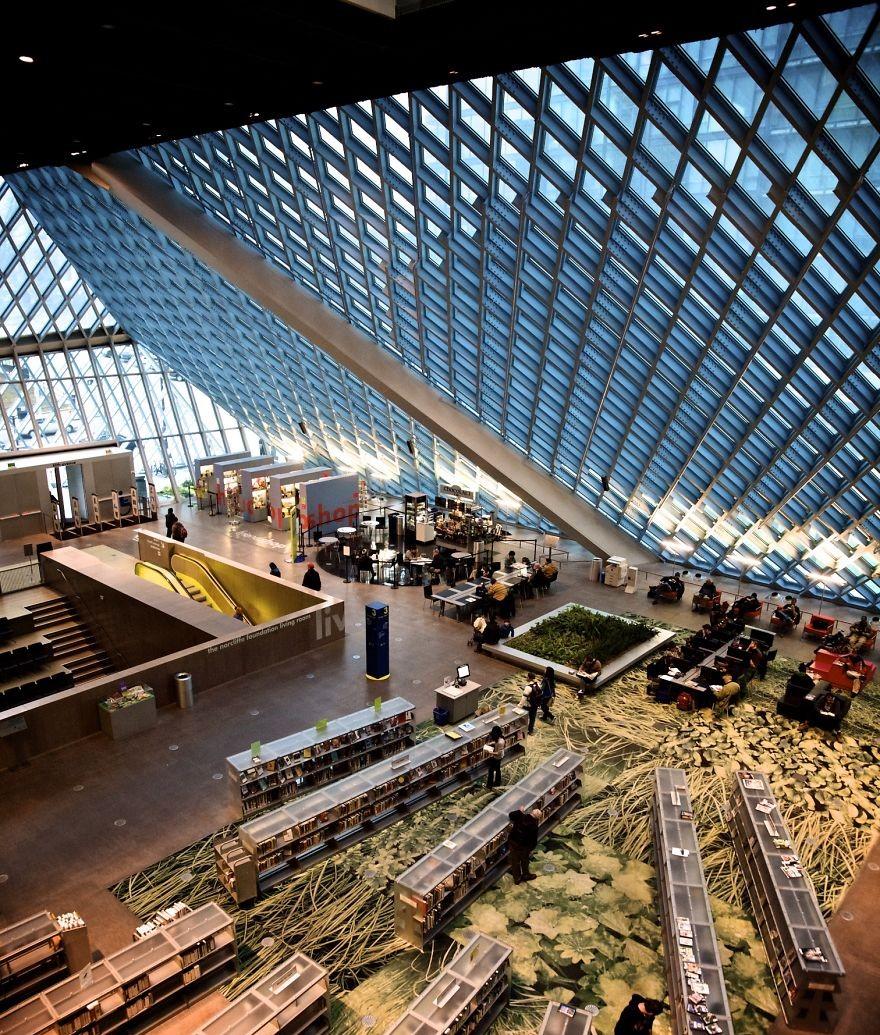
Rem Koolhaas's Vision
The Seattle Central Library exemplifies Rem Koolhaas's vision of architecture as a tool for innovation and reinvention. His approach challenges traditional architectural norms and redefines public spaces, including libraries, as vibrant, interactive, and transformative environments.
Koolhaas's design for the library is a testament to his commitment to architectural innovation. It showcases how architecture can be an instrument for shaping not only physical spaces but also the experiences and interactions of those who inhabit them. Koolhaas's legacy as a visionary architect is irrefutably tied to this remarkable project.
In conclusion, the Seattle Central Library, completed in 2004, stands as a remarkable example of contemporary library architecture, characterized by its unconventional form, functional design, and commitment to creating an engaging public space. Designed by the visionary architect Rem Koolhaas, this library challenges traditional notions of what a library should be, emphasizing the importance of innovation in architecture and the transformation of public spaces. It is a testament to the power of architectural innovation to redefine the way we interact with knowledge and our communities.
Recently Published
loves or pursues or

.jpg)






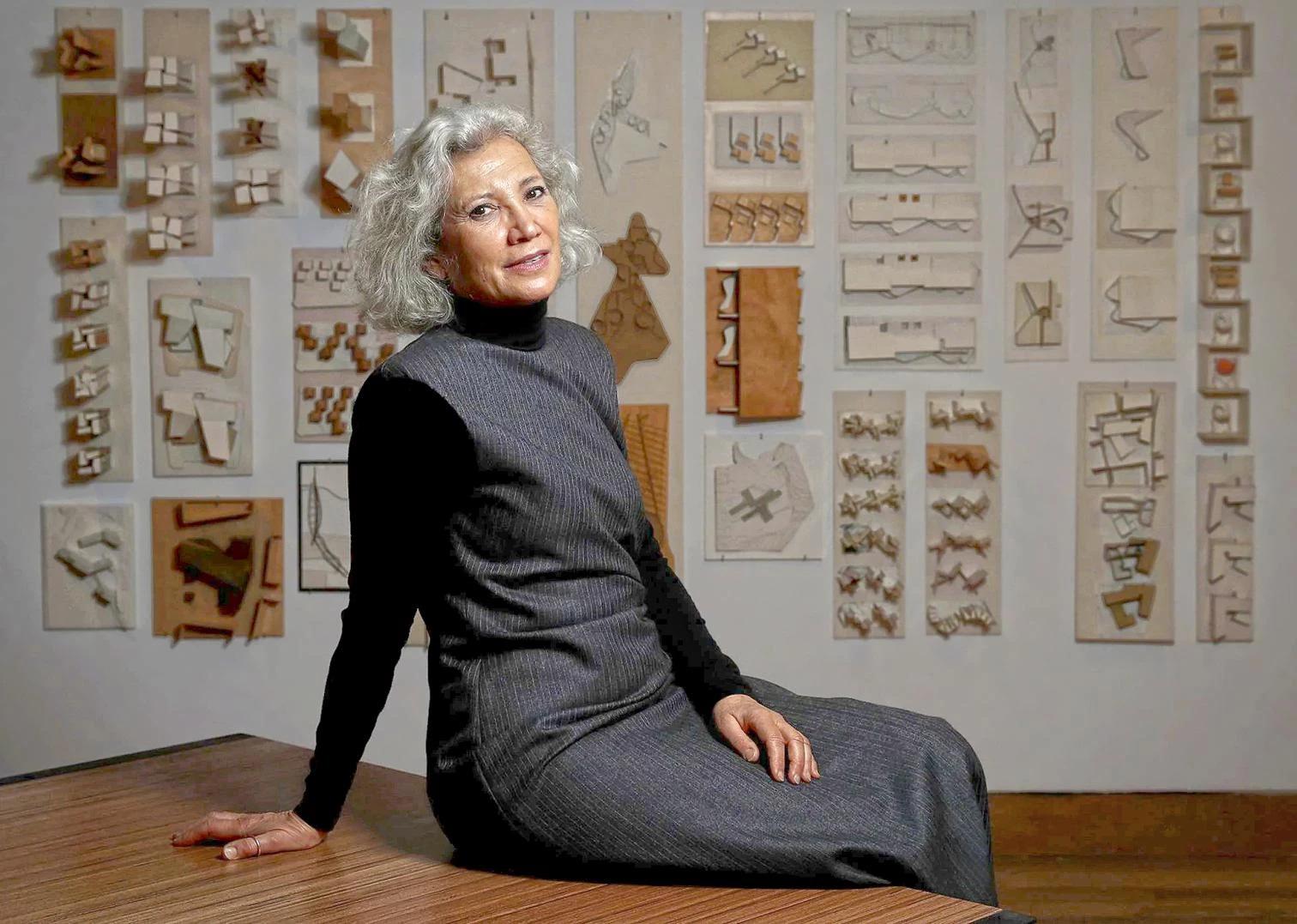
.jpg)